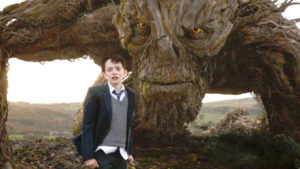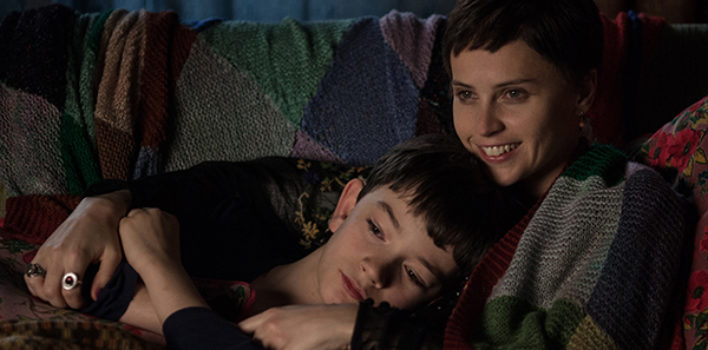How the 2016 Film Year Was Saved by Children
 Place yourself back in time, exactly one year ago, and think on what was coming our way on the big screen; An R-rated superhero flick, a Ghostbusters reboot, two Disney classic live-action remakes, an Independence Day sequel, a handful of very intriguing horror flicks, a Pixar sequel to one of the best Pixar movies ever, another look at the Harry Potter universe, a couple of promising video-game adaptations, another Star Trek movie, a Coen film, a Mel Gibson war film, Villeneuve, Scorsese, Spielberg going animated, even Batman and Superman were squaring off! 2016 should have been a wonderful year at the theater as some of the best minds in film were at work. So why was there such great consensus that 2016 was a down year for movies?
Place yourself back in time, exactly one year ago, and think on what was coming our way on the big screen; An R-rated superhero flick, a Ghostbusters reboot, two Disney classic live-action remakes, an Independence Day sequel, a handful of very intriguing horror flicks, a Pixar sequel to one of the best Pixar movies ever, another look at the Harry Potter universe, a couple of promising video-game adaptations, another Star Trek movie, a Coen film, a Mel Gibson war film, Villeneuve, Scorsese, Spielberg going animated, even Batman and Superman were squaring off! 2016 should have been a wonderful year at the theater as some of the best minds in film were at work. So why was there such great consensus that 2016 was a down year for movies?
If you do some digging you’ll find that it actually isn’t all THAT bad. In fact, it seems to be mostly just the big-budget blockbusters that left a bad taste and flavored the way we viewed the remainder of the year. This was the case going into awards season, when movie critics everywhere hold napkins under their chins to collect the drool when they look at the scheduled releases. I was able to see more of these films than in years past, and as I reflected upon my own experience at the box office this year I began to realize that, no, I didn’t feel let down by 2016 movies. In fact, there were a handful of films that I could credit for elevating my movie going experience—films like Arrivatl, or A Monster Calls, or The Edge of Seventeen. It was in consideration of these films that I began to notice a theme—a theme that may have saved 2016 for me (and possibly for many others as well): children.
That’s right. Children saved 2016.
 In a year of reboots and rehashes (not that I don’t enjoy more superhero movies as much as the next guy), there were a few movies that not only broke the mold, but used children to drive home their points. I could easily turn inward and say, “Is this just me?” but the films I’m thinking of have been, even in limited releases, received well.
In a year of reboots and rehashes (not that I don’t enjoy more superhero movies as much as the next guy), there were a few movies that not only broke the mold, but used children to drive home their points. I could easily turn inward and say, “Is this just me?” but the films I’m thinking of have been, even in limited releases, received well.
The films I’ve already mentioned are some of the best cases of this. With Arrival, the effectiveness of the film hinges on Louise’s (Amy Adams) choice to proceed in life despite, being able to see her future, knowing the pain it would bring her daughter and herself. It was asking the audience to consider doing the same with their own children and whether that pain was worth the love present in a relationship with their child. A Monster Calls isn’t even subtle. We follow a story of gut-wrenching despair and loss through the eyes of a child who both wants his mother to get well and wants to escape his grief. Through the emotions of a boy, audiences are automatically endearing themselves to everything he feels. And with The Edge of Seventeen, we have an independent teen who we may feel aggravated with at times, but we also understand the difficulty of the teenage years because we’ve all been there.
This trend continues in other award nominees. Manchester by the Sea, while anchored by an incredible performance by Casey Affleck as Lee Chandler, still hinges on the idea that the loss of children is profoundly life changing. Sing Street was a wonderful surprise because of all the terrific music, but also largely because it’s telling another story of genuine teenage drama and using music to show his coming-of-age. Lion pulls at our heartstrings by connecting a grown man with his feelings of despair and fear when he was lost as a 5-year old in Calcutta. The presence of children is strong in many of this years best films. So what?
What does all this mean? What can we deduce? Are we, as audiences, just conditioned to enjoy films about children? Well, that is too simplistic. It’s not the mere presence of children that is connecting—they are not even physically present or on screen much in cases like Arrival or Manchester by the Sea.
 There is something about children, be it their innocent—or even simple—perspective, or their mere presence, that can help us see a story with fresh eyes. Too often we, as adults, look for overtly complicated types of stories. We want something new. They’re the type of stories that challenge us because we’re tricked or surprised. Stories that can be so intricate that they take multiple viewings before we even understand what we watched. But sometimes a story that you’ve heard a thousand times can take on new life from a different perspective.
There is something about children, be it their innocent—or even simple—perspective, or their mere presence, that can help us see a story with fresh eyes. Too often we, as adults, look for overtly complicated types of stories. We want something new. They’re the type of stories that challenge us because we’re tricked or surprised. Stories that can be so intricate that they take multiple viewings before we even understand what we watched. But sometimes a story that you’ve heard a thousand times can take on new life from a different perspective.
Think for a moment on one of the ways Jesus did this in the Gospels. While his disciples squabbled over who is most exalted in God’s Kingdom, Christ tells many parables to try to answer their questions. Ultimately, he offers them the chance to change their perspective, saying, “…anyone who will not receive the kingdom of God like a little child will never enter it (Luke 18:17).” Jesus tried to explain the kingdom to the crowds and even his own disciples, but they had already heard those parables—they had “seen those films.” So Jesus shifted their perspective.
That’s what 2016 did better than many years of film before it. 2016 told stories about grief and growing up that we had heard hundreds of times before but gave us a new way to engage them. This simplified, but did not diminish, the grief. It emotionalized the growing up. These 2016 films changed our collective perspective in that regard—and that changed my perspective about 2016 films.







Pingback: Gene’s Top 10 Films of 2016 | Reel World Theology
Pingback: #126 – The 2016 Movie Year and a RWT Oscar Preview | Reel World Theology